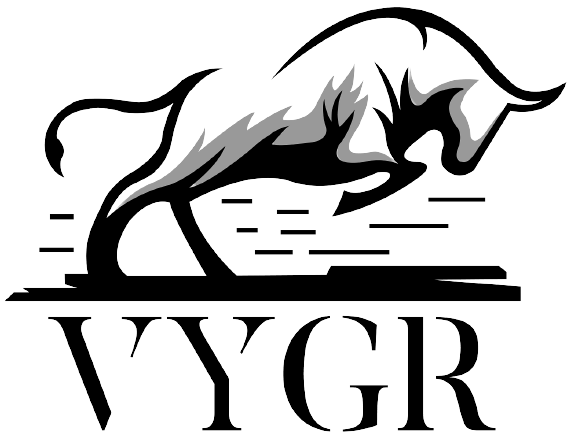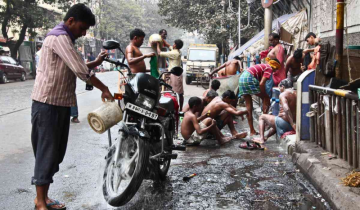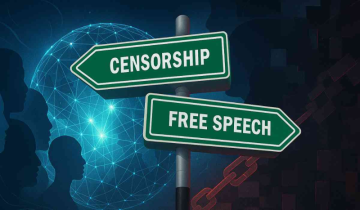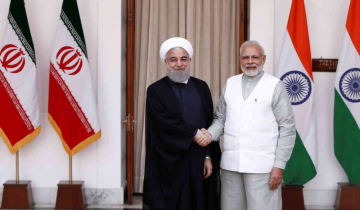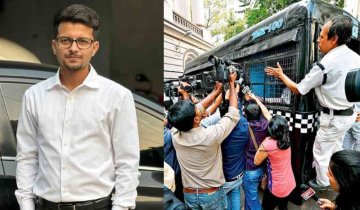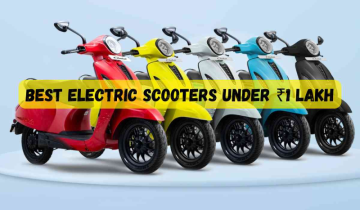South Asia has always been a 2-wheeler-heavy market, mostly due to the way of the infrastructure. May it be India, Thailand, Vietnam or Indonesia, our lives have always danced to the beats of bustling bazaars and vibrant street markets. To a point, where the 2-wheeler market in India alone was worth 16,000 Million USD in 2022, with a projected revenue of 27,000 Million USD by 2028. But a modern revolution is quietly transforming the way we navigate our cities, streets and by-lanes.
There is a visible shift in this vertical, and it’s getting more apparent with every new launch. And we know this trend is here to stay when Humara Bajaj relaunches Chetak, its signature tentpole brand in an electric avatar. This rise of e-scooters in India echoes the country's rich history of adapting and innovating to suit its unique challenges.
India’s love for the scooters:
India's urban centres have long been characterised by their lively chaos, where centuries-old traditions meet the demands of a rapidly modernising society. In this tapestry of contrasts, the emergence of e-scooters paints a fascinating picture of technological advancement intertwining with cultural heritage.
From the congested alleys of historic cities to the wide boulevards of modern metropolises, the need for efficient and sustainable transportation has always been a pressing concern. As early as the 1960s, the iconic Vespa, Lambretta & Vijay Super scooters became a symbol of mobility and freedom for post-independence India. These scooters became a ubiquitous sight, carrying families, goods, and dreams on their slender frames. Fast-forward to the 21st century and e-scooters are taking up the mantle, embodying India's aspirations for a cleaner and greener future.
Vastness of scope & need of the hour.
As India and the world, grapple with the challenges of urbanisation and environmental sustainability, the rise of e-scooters signifies a paradigm shift. Government initiatives and policies are converging with technological innovation to carve a new trajectory for mobility. However, this journey is not without its hurdles – from developing charging infrastructure to refining battery technologies that can endure the diverse climatic conditions of the subcontinent.
With the ongoing demand for low-cost electric 2-wheelers, major players are rolling out plans to launch electric versions of their top-selling models and massively increase production. While some of them like Ola, Ather continues to grow on their path of setting up Mega factories to handle the supposed oncoming demand influx.
India has thus far been approaching this cautiously with startups like Yulu and Vogo providing easy sharing options for users on subscription-based models rather than biting the bullet and owning a scooter oneself. Simpler thus, because then the user can effectively use a greener vehicle for last-mile connectivity without the hassle of managing its charging and service infrastructure.
But that is not the game India and its major auto players are playing. Ola who claims to have the largest 2-wheeler factory in the world “right here in India” states: “Powered by over 3000 AI-driven robots, the Ola Futurefactory is the world’s most advanced two-wheeler manufacturing facility. With over 100 acres of forest cover and a carbon negative footprint, it is also the world’s most sustainable two-wheeler factory.”
Hero too, has recently announced that it plans to increase its production capacity to 5 million units over the next 5 years to meet growing demand. By the middle of this year, Hero Corp expects to increase production capacity to 500,000 two-wheelers at its Ludhiana (Punjab) facility. In February 2022, Hero announced a partnership with Gogoro to set up battery swapping stations across India as well as launch electric scooters in India powered by Gogoro batteries.
Tarun Mehta, CEO of Ather Energy, an electric scooter manufacturer is experiencing a recent explosion in demand where three years ago, the company sold about 200 units a month and now, it easily clears about 15,000 units monthly. “Two-wheelers are going electric crazy fast and revenues are skyrocketing,” he said to CNN.
Okinawa Autotech famously stated - “We believe in moving forward without leaving Mother Nature behind. We are here to nurture a lifestyle that is not just rich from the outside, but has deeper values rooted within it, a lifestyle that believes in giving back to nature.”
Top 10 E-Scooter Players in India in 2023:
Ather Energy
TVS
3. Bajaj
4. Hero Electric
5. Ola Electric
6. Revolt Motors
7. Okinawa Autotech
8. Gemopai Electric
9. PURE EV
10. EeVe India
E-Vehicles - A Global Case Study:
Let us look at the 5 examples of Nations that effected this change:
1. Norway has one of the highest EV market shares globally, with electric vehicles accounting for a substantial portion of new car sales- almost 80% of all vehicles sold in Norway are battery-powered. The Norwegian government set ambitious targets to phase out new gasoline and diesel car sales by a specific year and is actively working toward achieving those goals.
2. China was not far behind. China is the world's largest EV market, driven by government policies and incentives to promote electric mobility. The Chinese government has implemented regulations that encourage automakers to produce more electric vehicles and set quotas for EV sales.
China has rapidly expanded its charging network to accommodate its growing EV fleet, including a significant number of fast-charging stations. Today China accounts for 57% of the global production of electric vehicles with over 6 million EVs produced last year and China's electric scooters and motorcycles market is forecasted to reach over $12 billion by 2025.
3. The Netherlands started by creating an extensive and accessible charging infrastructure, making it convenient for EV owners to charge their vehicles. In addition to incentives for individuals, the Netherlands offers tax advantages for businesses that choose electric vehicles for their fleets. The Netherlands incorporates EV charging infrastructure into urban planning, ensuring that charging points are available at workplaces, residential areas, and public spaces. The infrastructure ministry is aiming to allow mini e-scooters and other electric modes of transport to use Dutch roads and cycle lanes from 2025. Currently, it is illegal to do so.
4. German automakers have been investing heavily in electric vehicle development and production to meet growing demand. Germany is working to expand its charging network, aiming for widespread accessibility across the country. The German government provides financial incentives to EV buyers, including purchase premiums and tax benefits. EV adoption is aligned with Germany's commitment to achieving climate goals and reducing carbon emissions from the transportation sector.
5. The UK has committed to banning the sale of new petrol and diesel cars by a certain year, promoting the transition to electric vehicles. The UK is rapidly expanding its charging network, including on-street charging, to support the growing EV market. Favourable tax rates for electric company cars encourage businesses and employees to adopt electric vehicles.
India too, must move towards getting its act together on multiple fronts if it aims to fully monetise it is now growing E-scooter production and adoption and go above and beyond in its promises for green vehicles.
Conclusion:
Some Indian states offered additional incentives and benefits to promote EV adoption, such as reduced road tax and registration fees. Certain cities and states introduced electric buses and rickshaws as part of efforts to reduce air pollution and improve urban transportation.
The "National Electric Mobility Mission Plan" aims to create an ecosystem for EVs in India and promote their manufacturing, adoption, and usage.
But these alone will not be enough since the Indian user too needs to be sanitised, educated, and regulated under the law for an adoption and move to E-scooters:
Clear regulations and policies need to be established that govern the operation, safety, and usage of e-scooters.
Encouraging or mandating e-scooter operators to establish a robust charging and maintenance infrastructure to ensure e-scooters are regularly charged, well-maintained, and distributed evenly must be made.
Integrating e-scooter services with existing public transportation systems to provide last-mile connectivity and enhance overall mobility options will be a saner policy as well.
Electric scooters (e-scooters) can be a convenient and efficient means of transportation particularly useful for short-distance travel, providing a solution for the "last mile" between public transportation stops and user destinations.
In conclusion, the rise of e-scooters in India is more than a transportation trend; it's a symphony of history, culture, and innovation. These electric steeds navigate the intricate alleyways of tradition while accelerating towards a modern horizon, embodying the nation's aspiration for a harmonious coexistence between progress and heritage.
India's philosophical reverence for nature finds resonance in the electric heartbeat of these scooters. The country's history is deeply intertwined with nature, reflected in traditions, festivals, and spiritual beliefs. E-scooters, as a means to curb air pollution and reduce carbon emissions, are a modern embodiment of these ancient values.
© Vygr Media Private Limited 2023. All Rights Reserved.
